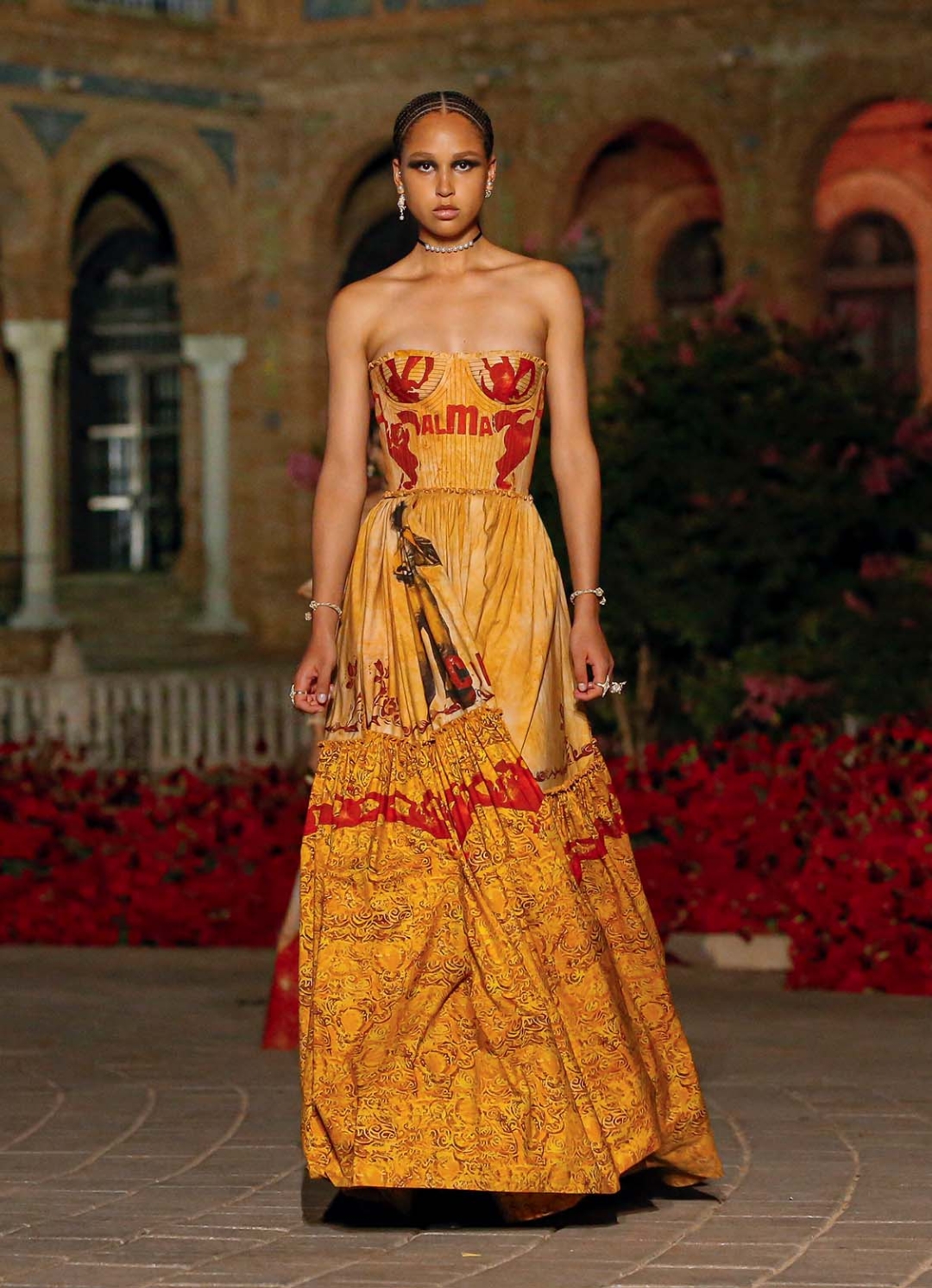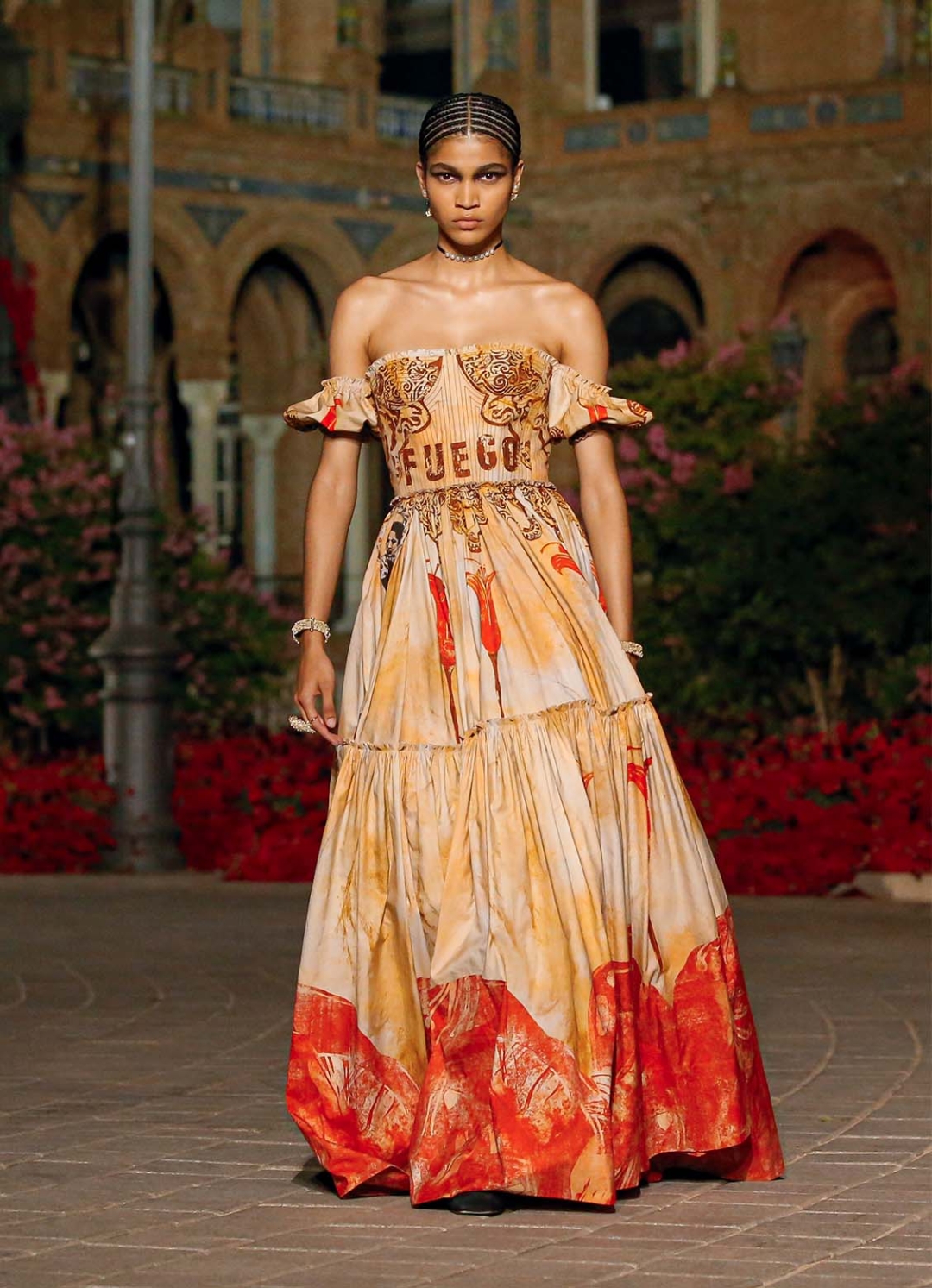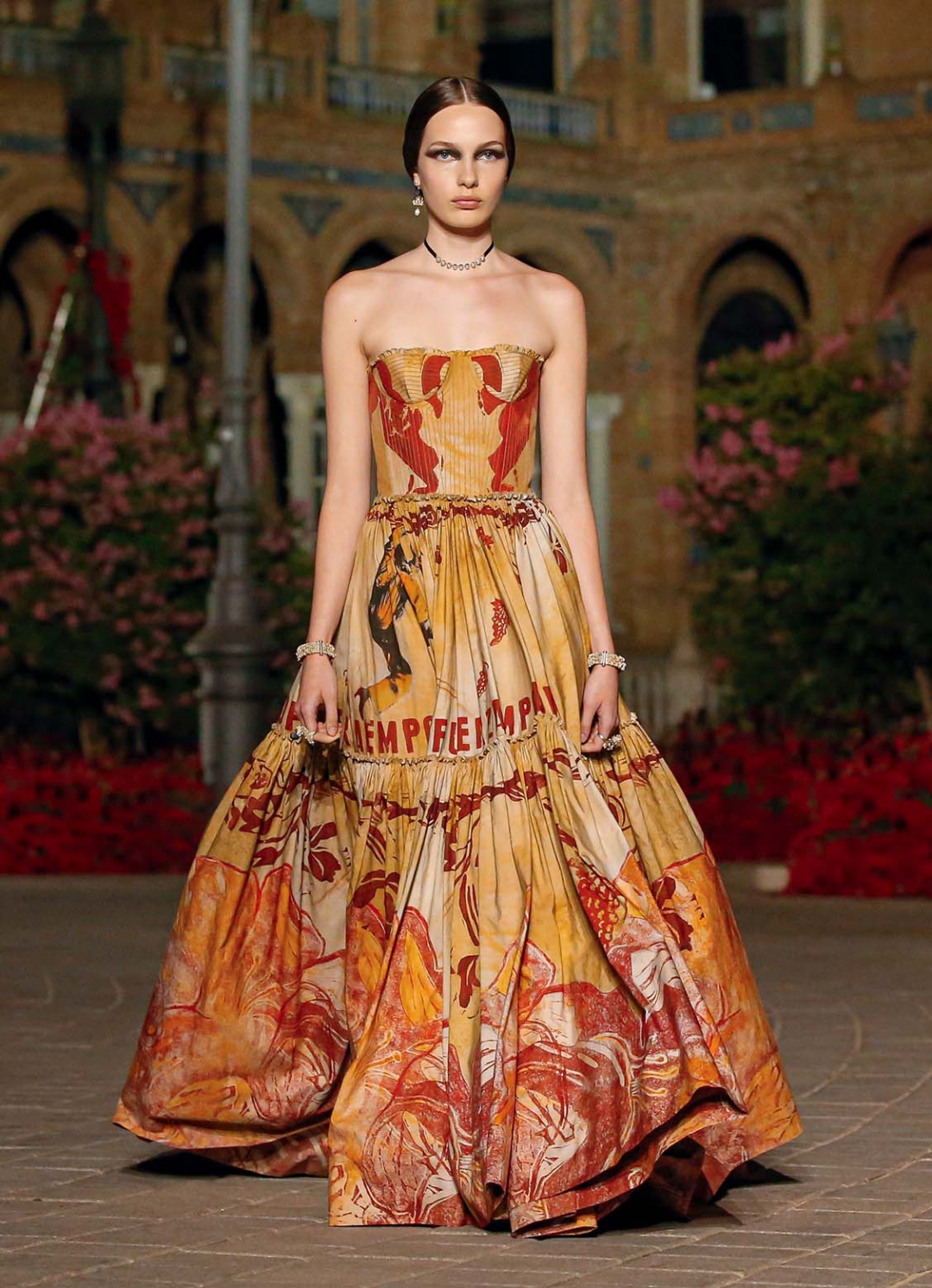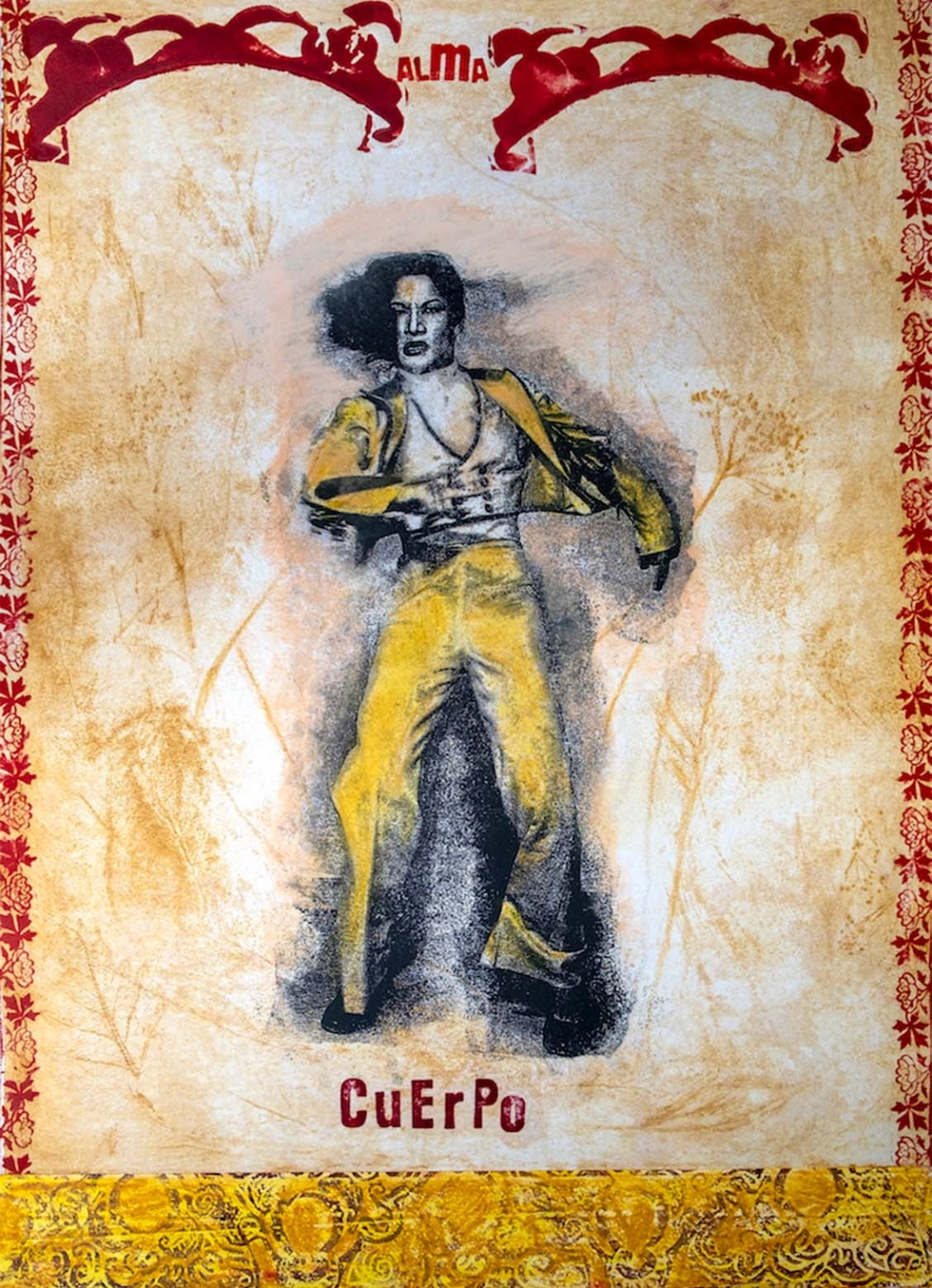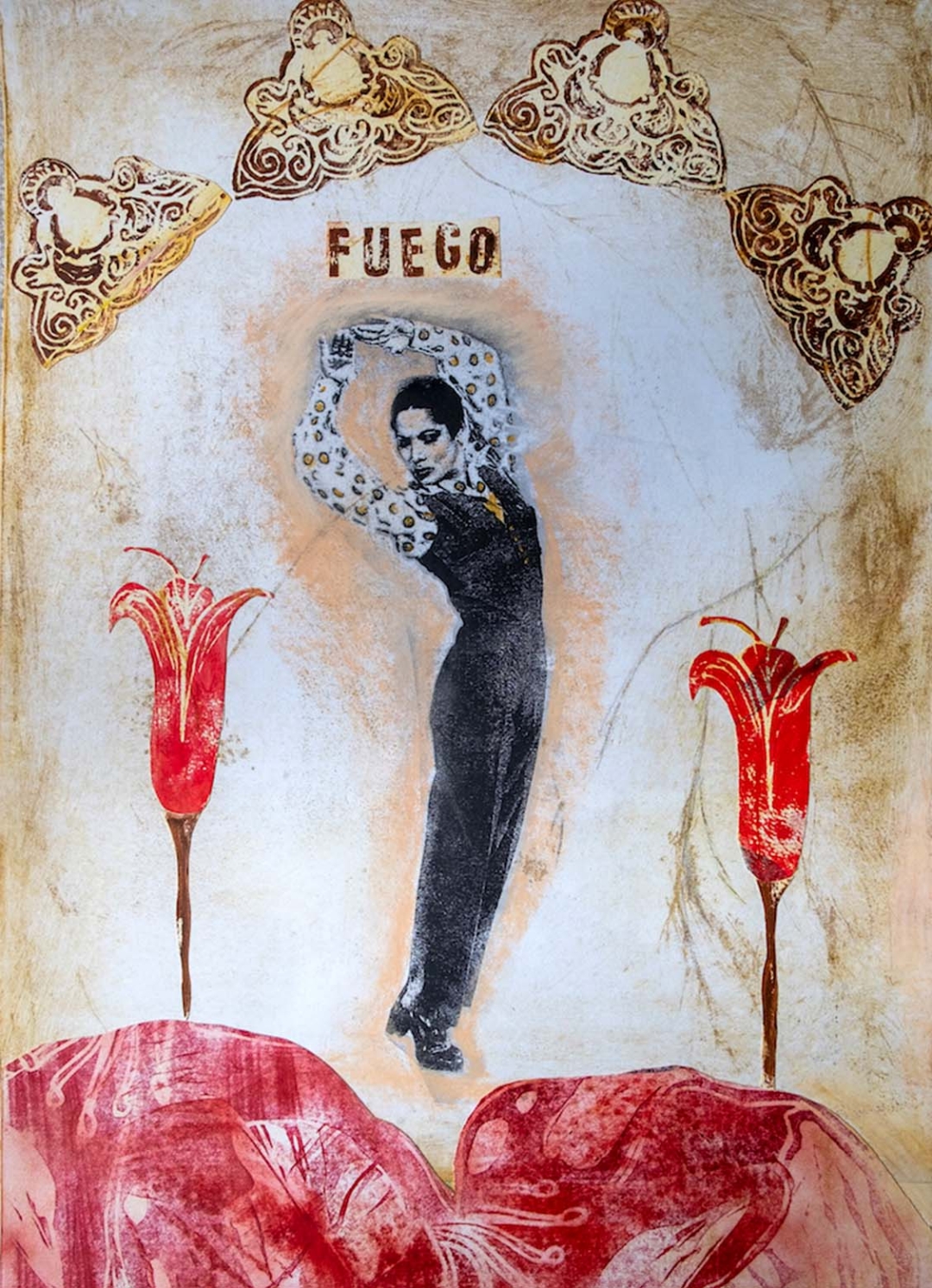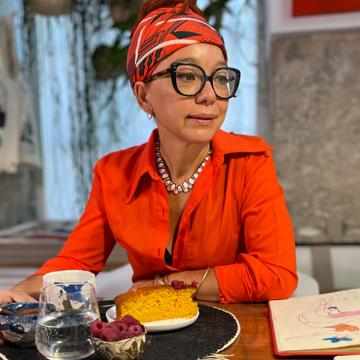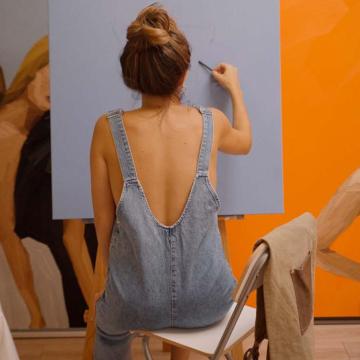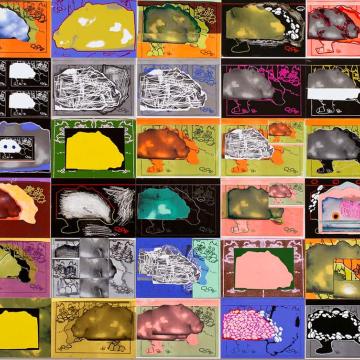Talent for comics and graphic novels is endless in Spain. Paco Roca, Ana Penyas, Paco Sordo, María Medem, Juanjo Guarnido, Teresa Valero… Do you want to get to know some of the best illustrators in the country?
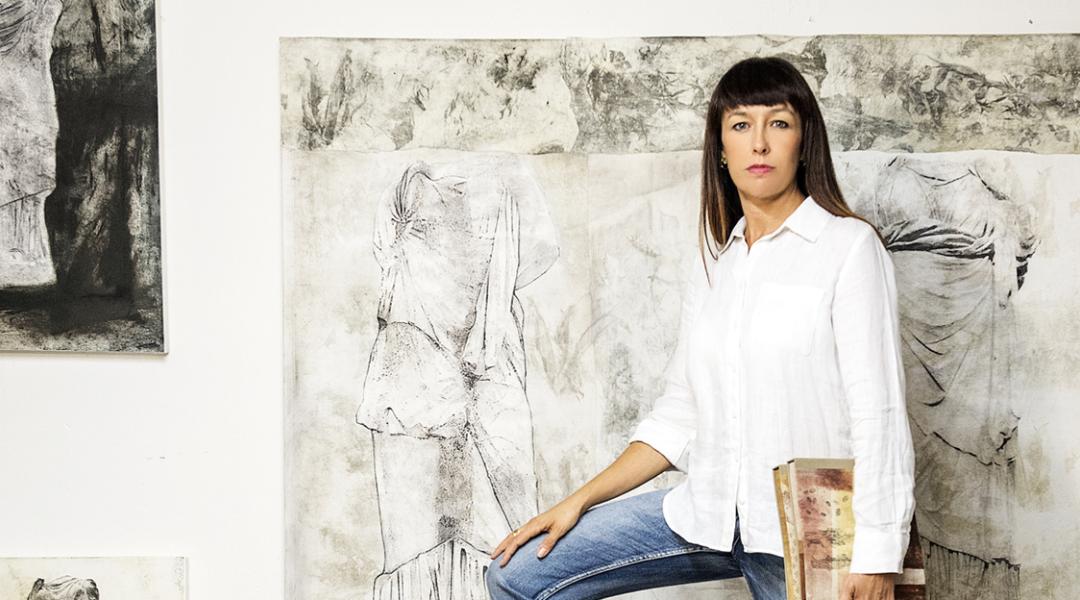
María Ángeles Vila works and exhibits her work between Rome, where she lives, and Valencia, her hometown. An intimist work that started out talking about family roots and that today poses more socially committed discourses. The passion, sensitivity, and versatility captured in her creations, and her talent with a Spanish accent captivated none other than Maria Grazia Chiuri, Dior’s creative director.
During her first formative years, María Ángeles Vila (Valencia, 1978) was influenced by abstract art and informal painting: Tapies, Dubuffet, Saura, Canogar, Millares… A phase during which she flirted with technical experimentation, playing with composition and colour. Later, her work evolved without setting aside her foundations, but heading towards a compelling need to include photography and narrative in her works through symbols and icons. Like she has done in La Capitana, a personal commission by Maria Grazia Chiuri, the creative director of Dior, for the acclaimed Cruise 2023 fashion show that the French brand recently held in Seville.
Did you ever imagine that you’d end up collaborating with Dior?
No, although I’d been wishing for it for a long time, because I’ve been following Maria Grazia Chiuri’s work for years. She invites female artists to participate in her projects and that’s what’s always attracted me, but I never dreamt that it could happen.
How did it happen?
Maria Grazia came to my studio thanks to Paola Ugolini and Maria Alicata, two Roman commissioners whom I’ve worked with for years. From the minute she walked in, she lovingly gazed at each of my works. She’d approach them and say: “Che bello”. It was a magical moment.
And then she commissioned the posters of flamenco dancer Carmen Amaya for the Dior Cruise 2023 fashion show in Seville.
Yes. Carmen Amaya was one of the sources of inspiration for Chiuri in this show, a female role model who broke the stereotypes of her era. Her initial intention was to make an urban art intervention, but that proposal was changed and my posters were used to create the prints with which she created wonderful dresses.
How does your work change when you see it on a model?
Chiuri has managed to transform my two-dimensional work into moving figures and animate them on the bodies of the models, who blend into them as they walk. This artistic exchange has been incredible, but she’s a genius. She doesn’t just do fashion; she invents new ways of making it. She also looks for female role models for her projects, studies other women, visits them at their workshops, listens to them, and offers them a fantastic opportunity. She empowers artisans and artists. Sorority is a fundamental principle in her projects.
By the way, does living in Rome overwhelm or inspire your talent?
It’s a constant source of inspiration, a continuous surprise. There’s beauty in every step. For the last 20 years it surprises me and captivates me daily.
“When you live far away from your roots, you manage to see where you come from more clearly”
After living in Italy for 20 years, what is left of your Spanish roots in your works?
So much. When you live far away from your roots, you manage to see where you come from more clearly. Valencia is a land full of artisans, artists, and traditions. My roots are part of my creations, my work exudes Spanish influence.
Is that why your colour palette speaks in reds and ochres?
Perhaps. Red is the colour of the land of my childhood. I have many images engraved in my memory of reddish landscapes with warm glazing under the intense light of Valencia. It’s also a predominant colour in Rome, alongside ochres and browns. They’re colours that follow me.
You’ve experimented with lots of techniques, but you’re an expert in engraving and printing. What do you find fascinating about them?
It’s a ritual where I feel comfortable, where knowledge and chance coexist, and where mistakes turn into a new stimulus. They’re techniques with a slow but surprising process: engraving a plate, staining it with ink, soaking the paper, manipulating it, and finally, stamping it with the rolling press. There’s a surprise factor every time you make a print, a mystery similar to developing photographs. I’m fascinated by it!
How do you add a contemporary vibe to works made using such antique techniques?
Setting aside classic print runs and experimenting with everything. Now I paint on the plates, I make monotypes, I use the rolling press as a tool. For the La Capitana posters for Dior, for example, I transferred images of Carmen Amaya using lithography. Then I finished them off by printing visual elements typical of Spanish folklore: combs, fruits, flowers, borders, etc. and adding some keywords that represented that woman’s power. I also create artistic installations, set designs, and works that tell contemporary stories.
Which is your talent’s source of inspiration?
My family, my culture, and my roots. The women in my family, like my grandmother Amparo, my aunt Carmen, my mother Rafaela, my cousins... They’re all part of my creations, they walk around enveloped by stories, they’re symbols of strength and determination. Everything I create I do so from a personal vision, sometimes with a narrative and other times a descriptive perspective.
Inspiration that can also be used to condemn things?
Partly, yes. With artist Alicia Herrero, dancer and performer, I’m part of a multidisciplinary artistic duo known as Las Mitocondria. Our project Cultura Doméstica, for example, tries to raise awareness about everything that remains silenced in domestic spaces through relatable symbols and covers sociological aspects about intergenerational gender stereotypes.
“No matter the place or profile, the important thing is to create participatory and active art that is connected to society”
Tell us about Botánica Doméstica and Abrazos, your two other most recent projects.
With Botánica Doméstica my aim was to convey conventional female wisdom, the secret language of home remedies traditionally shared between mothers and daughters, but also recall the suspicion and discrimination linked to this kind of knowledge, and the many persecutions suffered by those wise women. The herbal leaves and flowers that can be seen now in my work intertwine the beauty of natural shapes in contrast with the punishments suffered by those women. Furthermore, Abrazos is a current collective and multidisciplinary project with Las Mitocondria. It came about after the pandemic and is a combination of performance and plastic art, with my works printed on sheets we make up an installation that speaks of overcoming individual limits, and the contact between the body and the space.
As you were saying, Abrazos is a community project where anonymous people of different ages take part. Do you need a direct connection with society to use your talent?
Yes. I’ve been sharing my creative processes with different communities for years: children, adults, public and private schools, large events, poorer neighbourhoods... No matter the place or profile, the important thing is to create participatory and active art that is connected to society, where we can share, interact, and collaborate with different communities. During one phase of the Abrazos project, for example, I invite participants to draw, write, and print images on slides that we then project onto the sheets that act as canvases around the space we exhibit in.
